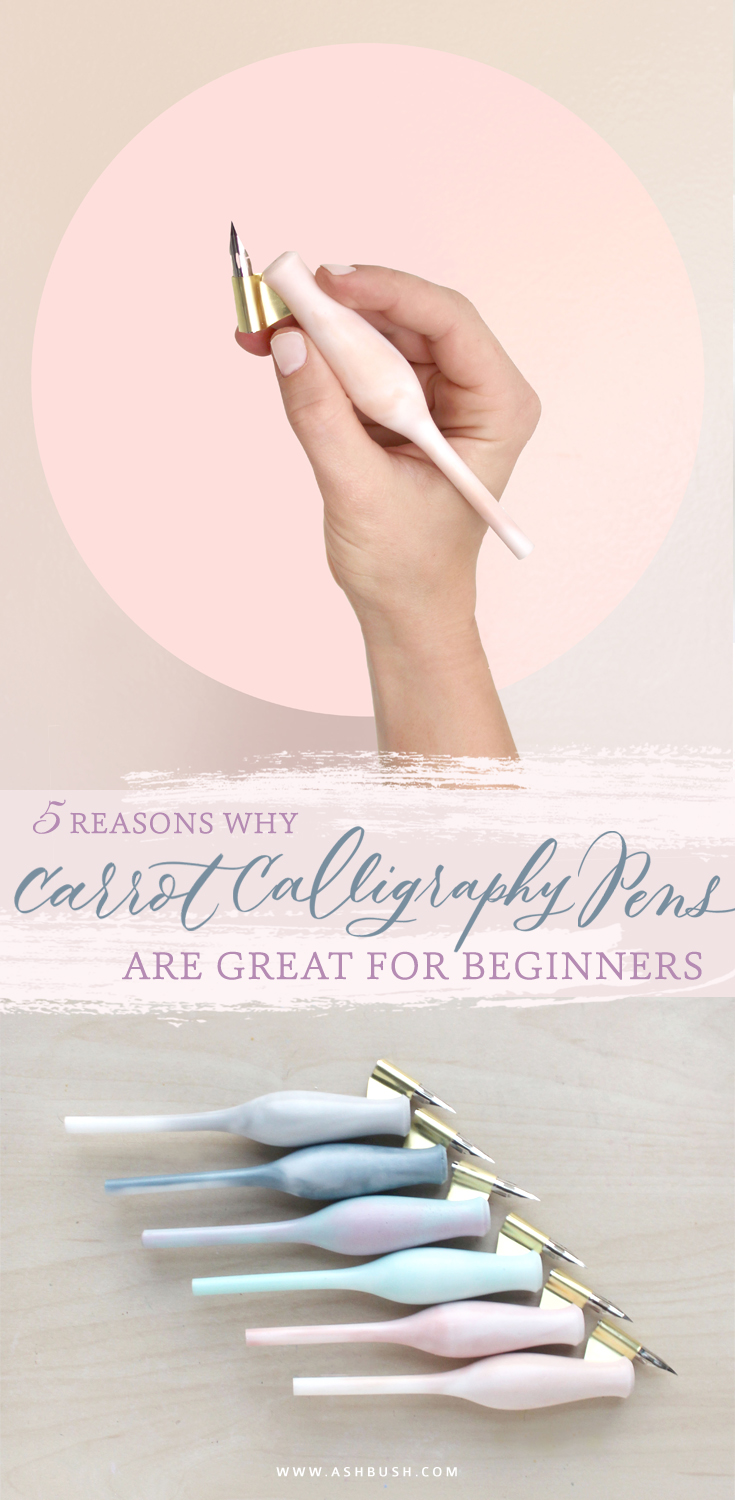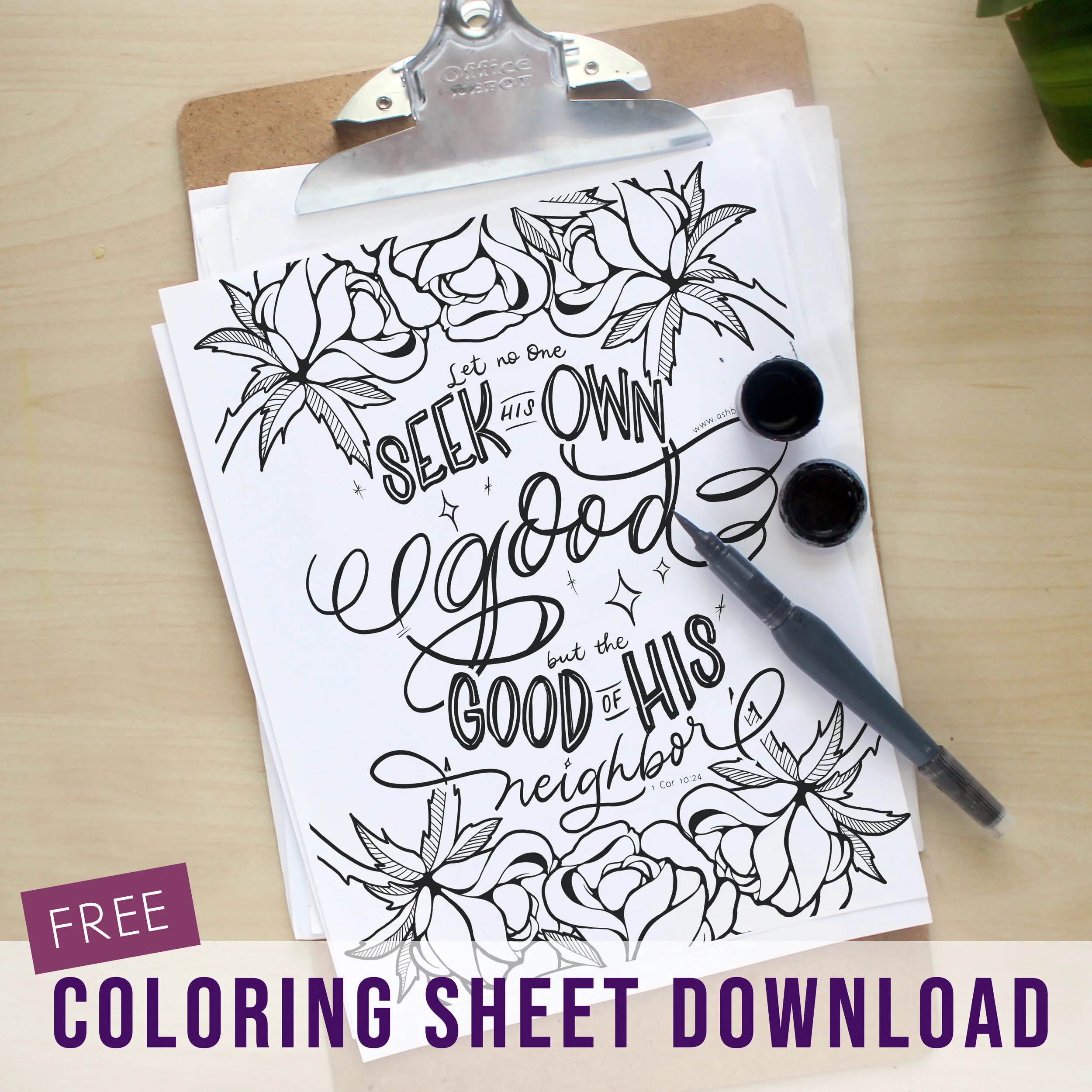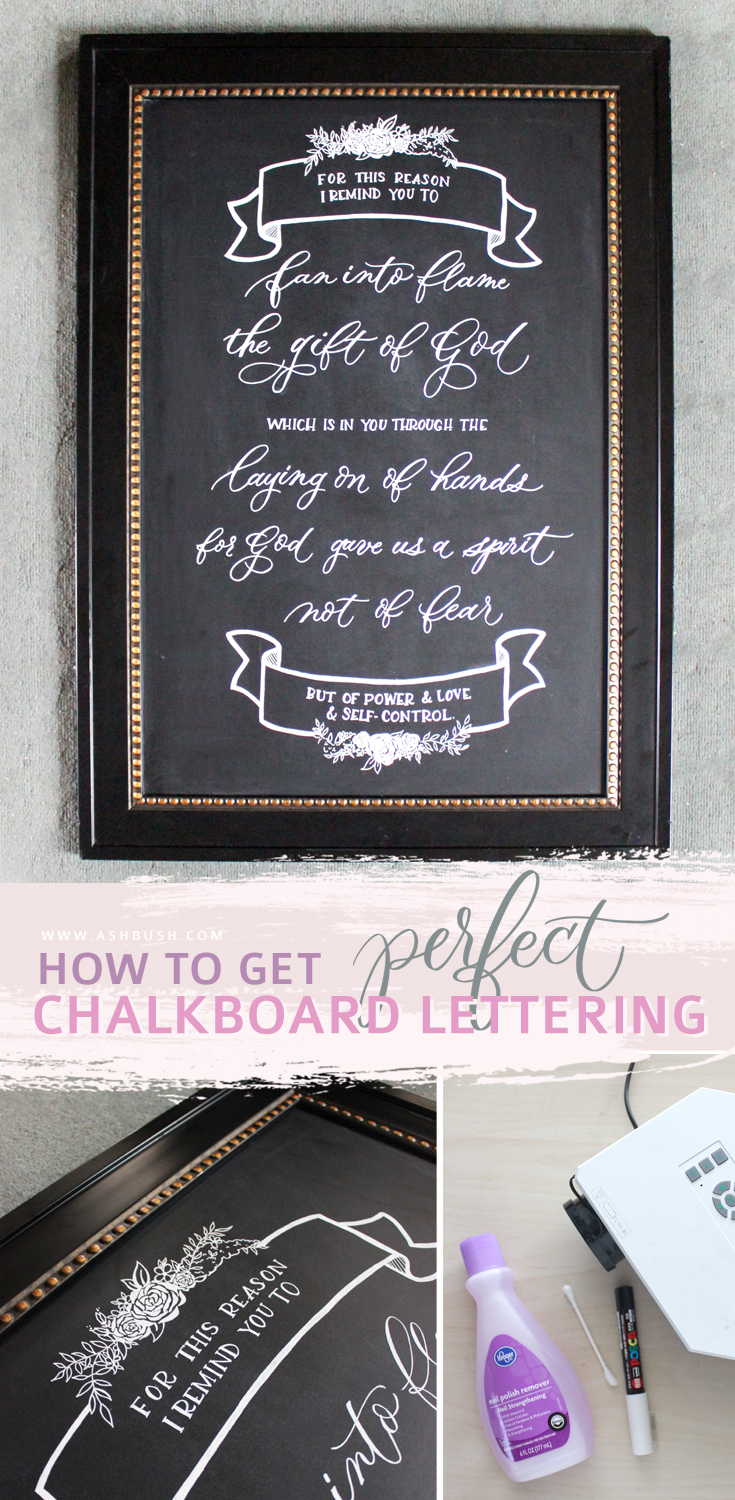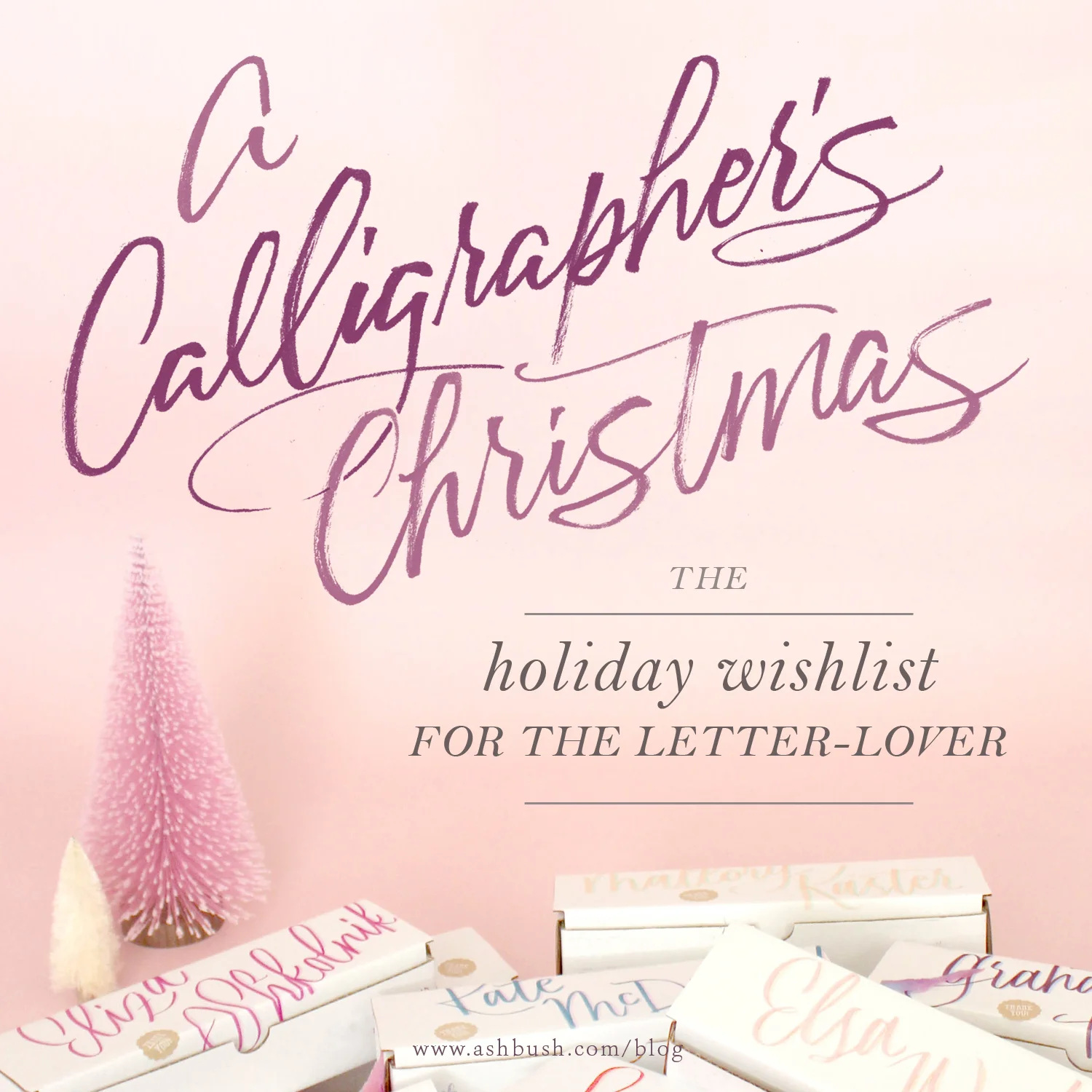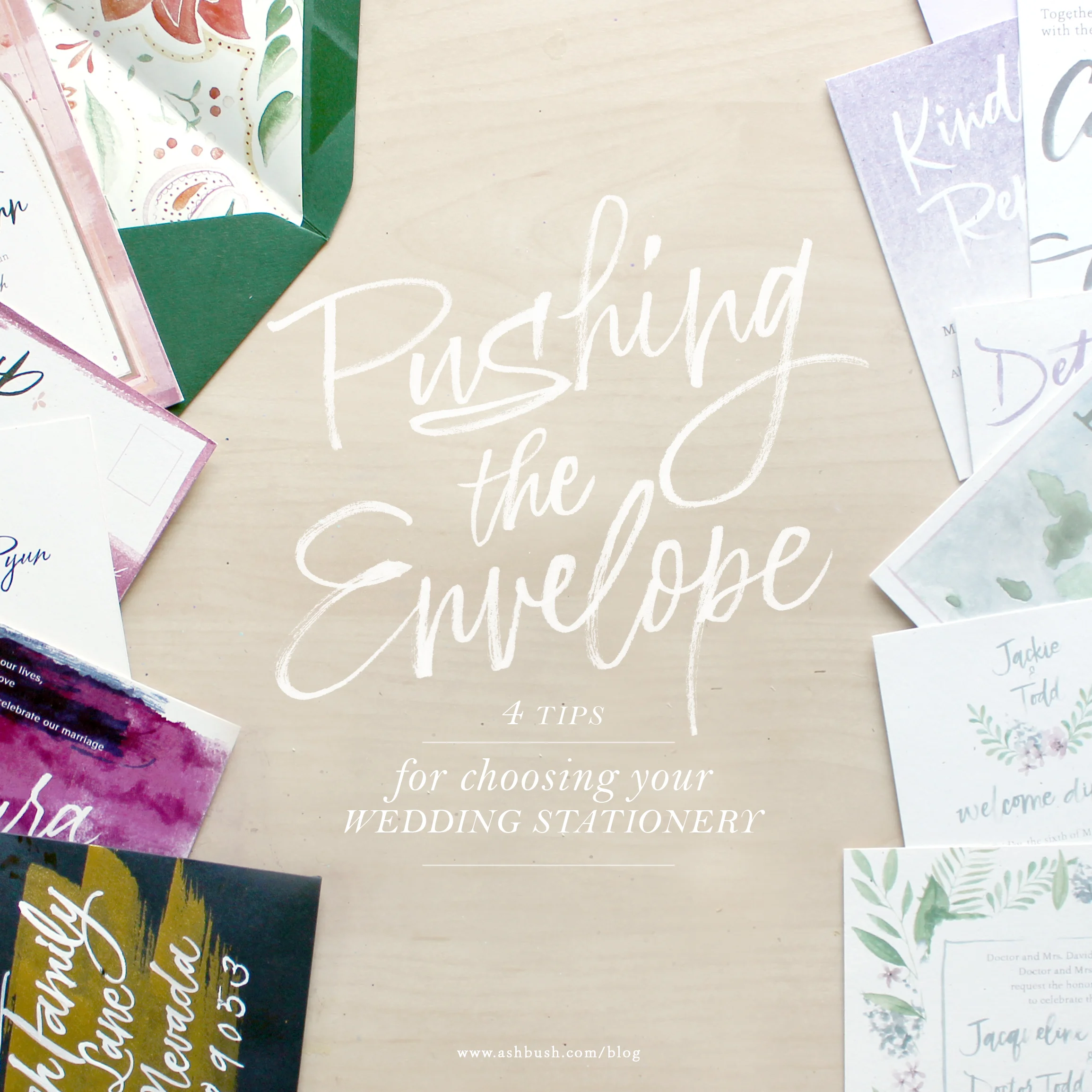5 Reasons Why Carrot Calligraphy Pens are Great for Beginners
As you may or may not know, carrot pens are my all-time favorite! They're my preferred pen shape, I use one for every project and here's why...
1. Better Control
The shorter length means that most of the pen fits right in your hand, and the thickness assures that more of the pen is touching your hand. This helps you to garner more control over your writing device, as opposed to having a long or heavier back end of the pen, or the grip of it only touching your fingertips.
2. Trains Hand
Working with a thicker grip is perfect for users new to calligraphy because it helps train your hand from the beginning to have a looser, wider grip on the pen. This will help you loosen up while writing, getting into the graceful rhythm needed to create thin hairlines and consistent ovals. This also trains you to not write with your fingers but to instead use a full arm movement.
3. Less Hand Cramps
Looser grip = less hand cramps. We often try to garner control over our pens by squeezing the life out of them. This is bad practice. A wide grip helps us keep our hand open. There are some people out there who like to say this isn't true, but I get specific requests for very thick holders from calligraphers who suffer from arthritis or carpal tunnel, and this is the only way they can write pain-free.
4. Longer Writing
And if your hand doesn't get fatigued as fast this means you can work for longer! This is awesome, especially when your bride adds 50 extra addresses to her order last minute and you need to crank out those envelopes in one night.
If you do suffer from pain while writing you can also try using a wrist brace.
5. Cheaper
Smaller pen, smaller price. Most of the time carrots will be cheaper, which is great news if you're just starting out! These carrot pens are only $30, are water-proof and crack-proof: perfect for messy beginners!
Pen Tips
Straight vs Oblique
This will end up being a preference thing, but when just starting out I usually recommend using an oblique. I know, it looks harder and more foreign than a straight but hear me out: A straight is so close to a typical pen that it's too easy to use it like a ball-point pen, but you should be learning a new grip and new arm motion that's totally different from your normal writing experience. A straight holder also requires you to turn the paper at a much sharper angle than when you use an oblique, which can be very difficult to get a good perspective and sense of how your letters should be shaping up. It can also be much harder to keep a consistent slant with a straight holder. So while the learning to use an oblique can feel really weird at first, it will help you in the long run. And once you've gotten used to it, move on to master the straight and see which one you prefer!
Left-handed? Take a peek at this video by left-handed master penman, John DeCollibus:

